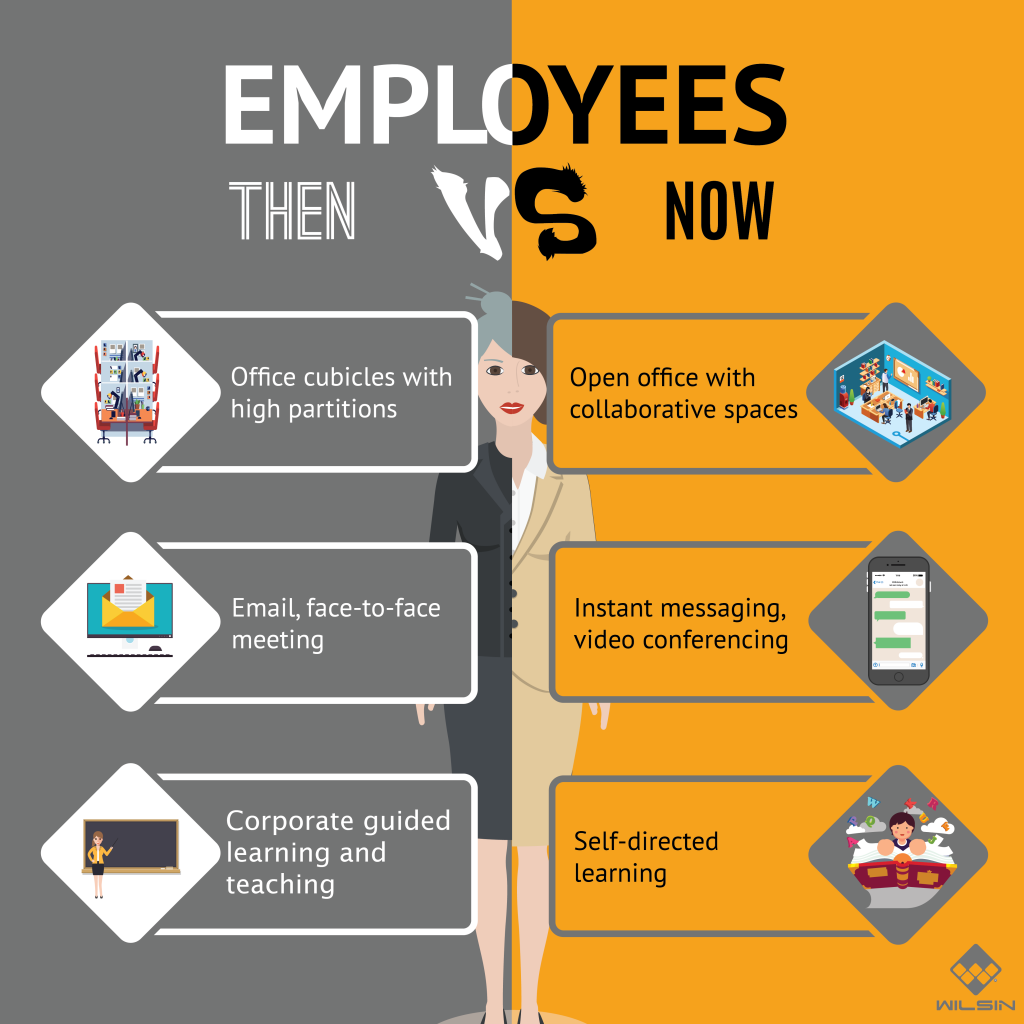Employees Then Vs Now

“There Is Nothing Permanent Except Change” – Heraclitus of Ephesus, Greek Philosopher
Change is essential for any organization, especially in the retainment and development of human capital assets. As the needs and requirements of our clients evolve rapidly over the years, it is also vital for business owners to keep up with the wants of the employees at the same time. Failure to do so will adversely impact the recruitment of talents, causing the company to lose its competitive edge.
Introduction of new technologies and tools has made the workplace a very different place to what it used to be. The following are some of the differences of how employees work, then and now:
Workplace Environment
High cubicles and partitions used to be a common sight in the workplace where privacy and personal space were in place for employees to always stay focus on their tasks. In contrast, the trend of open office interior designs these days paves the way to a more open and collaborative company culture, encouraging employees to discuss and work together. On top of that, as companies become more conscious of the need to enhance employee well-being, the introduction of perks such as nap pods and meditation rooms are slowly blurring the lines between office workplace and the comfort of their home.
Communication and Portability
The internet, proliferation of smart devices and online file-sharing platforms have greatly increased our work portability, enabling us to work anywhere, anytime. Traditional business communication methods are also gradually making way to fast and collaborative communication platforms, such as Whatsapp, Skype and Slack. These tools have led to an upsurge in remote working and collaboration with people in another time zone with ease.
Learning Style and Approach
Corporate learning and teaching are slowly becoming a thing of the past as employees today are expected to be highly versatile and adaptable. Research has shown that knowledge acquired through self-directed learning based on the individual’s pace, strengths and interests, is more effective than guided learning. Moreover, easy access to search engines, scholarly articles, and online courses have also made it possible for one to be equipped with accurate information and knowledge within a very short time.
All these differences underline the critical importance for companies and businesses to keep abreast with the needs of the employees through continual transformation of the office workplace.
For professional advice on creating a highly dynamic and versatile office workplace for you and your company, enquire with our experienced and friendly team of consultants at Wilsin today!


